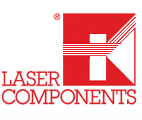
Contact
Laser Components (UK) Ltd.Goldlay House,
114 Parkway,
Chelmsford Essex CM2 7PR
United Kingdom
Phone: +44 1245 491 499
E-Mail:info@lasercomponents.co.uk

Taper Manufacturing Station (TMS) is the name of the unit used to taper optical fibres. It is also used in the manufacture of fibre bundles and couplers.
The TMS can be used to manufacture single direction and bi-directional tapers, melt and taper fibre bundles, and produce couplers. An integrated cleaver facilitates exact separation; the location and diametre of the break on the fibre(s) can be precisely selected via the available software.
In single direction tapers, the corresponding programme independently calculates the linear taper ratio based on the fibre thickness and taper length. It is perfectly suited for taper ratios of <50%.
In bi-directional tapers, the left and right sliders both pull out simultaneously while the ring of fire moves along the fibre and melts it evenly. This produces an exponential taper with almost unlimited taper ratios.
The TMS is based on the patented method of Thermally Stabilized PlasmaTM, which is produced in a partial vacuum. This makes it possible to extend the heated fibre area by a factor of ten, leading to a more even taper profile and preventing modulations to said profile. This results in much fewer attenuation losses in the taper.
The partial vacuum minimizes the oxidation of the electrode tips and virtually prevents deposits on the glass surface. This has been proven by high-power testing of the taper. Thus, it is not necessary to etch the surface.